FAQ - Advanced Bathroom Queries
What Is a Comfort Height Toilet
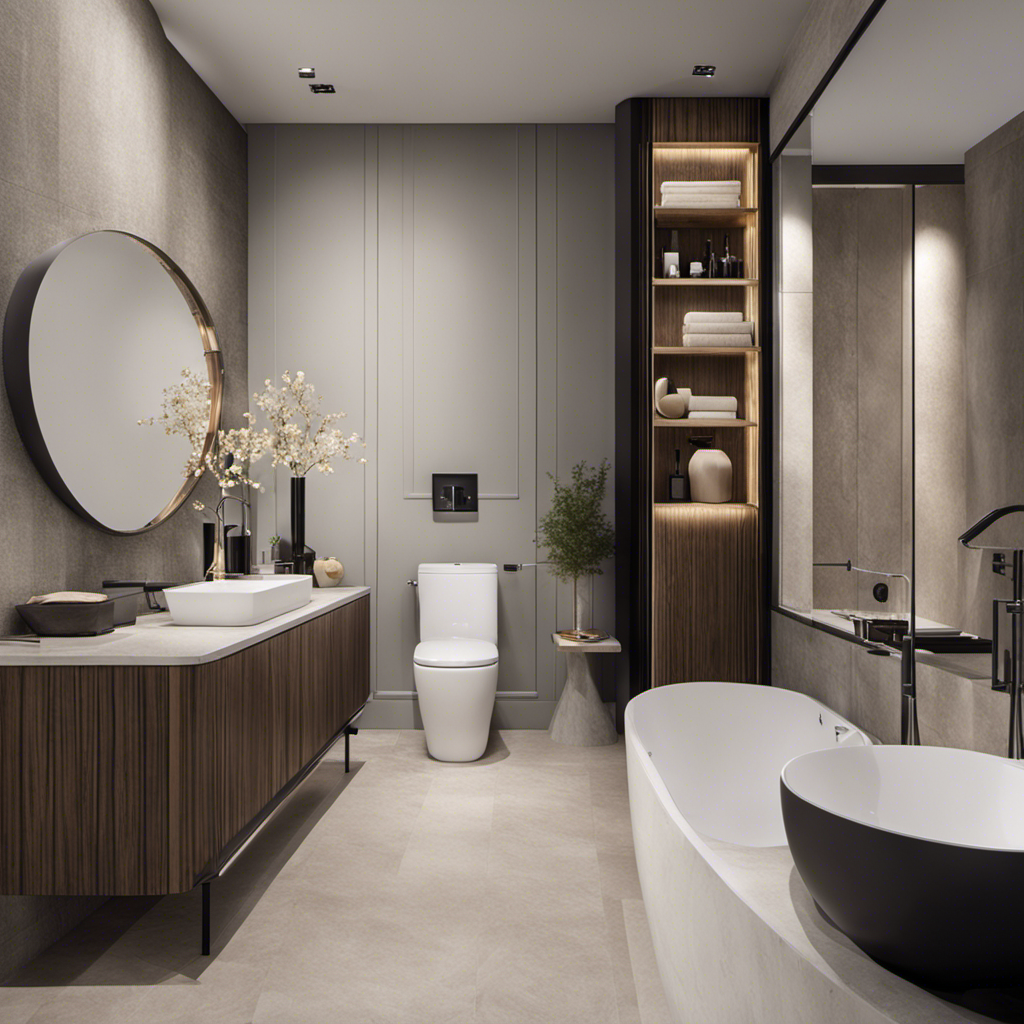
I gotta tell you, folks, comfort is the name of the game when it comes to toilets. And let me tell you, a comfort height toilet is where it’s at.
In this article, we’re diving deep into what exactly a comfort height toilet is, and why it’s worth considering for your bathroom. We’ll be covering everything from the benefits and measurements, to choosing the right one and even the impact on accessibility.
So sit back, relax, and get ready to learn all about the wonders of comfort height toilets.
Key Takeaways
- Comfort height toilets are designed to be taller than standard toilets, providing easier sitting and standing for those with mobility issues or physical limitations.
- They promote better posture and reduce the risk of injury by reducing strain on the knees and back.
- Comfort height toilets offer a more comfortable and convenient experience, increasing user satisfaction.
- Understanding height measurements such as comfort height, ADA compliance, chair height, and standard height helps in choosing a toilet that suits specific needs and provides optimal comfort and accessibility.
Benefits of a Comfort Height Toilet
You’ll appreciate the benefits of a comfort height toilet. They are designed to be taller than standard toilets, typically measuring between 17 to 19 inches in height. This extra height makes it easier for users to sit down and stand up, especially for those with mobility issues or physical limitations. The reduced strain on the knees and back promotes better posture and reduces the risk of injury.
Additionally, comfort height toilets are known to increase user satisfaction. They provide a more comfortable and convenient experience. Many people find them to be more ergonomic and easier to use, leading to a higher level of overall satisfaction.
Understanding the Height Measurements
Understanding the measurements can help you choose the right toilet for your needs. When it comes to toilet dimensions, height is an important factor to consider. Here are four key points to help you understand height measurements:
-
Comfort Height: This refers to the standard height of a toilet, which is typically around 17 to 19 inches from the floor to the top of the seat. It is designed to provide ease of use for people with mobility issues or those who prefer a higher seating position.
-
ADA Compliance: The Americans with Disabilities Act (ADA) requires toilets in public spaces to have a minimum height of 17 to 19 inches. This ensures accessibility for individuals with disabilities.
-
Chair Height: This term is often used interchangeably with comfort height. It reflects the idea that the toilet is designed to be at a similar height to a chair, making it easier to sit down and stand up.
-
Standard Height: A standard height toilet is typically around 14 to 15 inches from the floor to the top of the seat. These toilets are more suited for children or individuals who prefer a lower seating position.
Understanding these height measurements can help you choose a toilet that best suits your needs and provides optimal comfort and accessibility.
How to Choose the Right Comfort Height Toilet
When selecting the perfect toilet for your needs, it’s important to consider the ideal seating position that provides maximum comfort and accessibility. One of the key factors to consider is choosing the right size, as comfort height toilets come in various dimensions to accommodate different individuals. To aid you in making an informed decision, here is a table outlining the size options available:
| Size Option | Seat Height (inches) | Width (inches) | Depth (inches) |
|---|---|---|---|
| Standard | 15-16.5 | 14-16.5 | 25-28.5 |
| Comfort | 17-19 | 16-18 | 28-30.5 |
| Extra tall | 19-21 | 18-20 | 30-32.5 |
Once you have chosen the right size, it’s important to ensure that the seat height is adjustable to meet your specific needs. This feature allows for customization and optimal comfort. Now that you have a better understanding of how to choose the right comfort height toilet, let’s move on to the next topic, which covers the installation and maintenance of these toilets.
Installation and Maintenance of Comfort Height Toilets
When it comes to the installation and maintenance of comfort height toilets, there are several key points to keep in mind.
First and foremost, proper installation techniques are crucial to ensure the toilet functions correctly and securely.
Secondly, cleaning and sanitizing tips are essential to maintain hygiene and prevent any build-up of bacteria or odors.
Lastly, being aware of common maintenance issues can help identify and address any problems that may arise, ensuring the longevity and efficiency of the comfort height toilet.
Proper Installation Techniques
To ensure proper installation of a comfort height toilet, you should follow the manufacturer’s instructions and use the recommended tools. Here are some important techniques to keep in mind:
-
Leveling: Start by ensuring that the floor is level before installing the toilet. Use a level to check for any unevenness and make necessary adjustments.
-
Sealing: Properly seal the base of the toilet to prevent any leaks. Apply a thin bead of silicone caulk around the edge of the toilet base before placing it on the flange.
-
Bolts and Washers: Use the provided bolts and washers to secure the toilet to the flange. Tighten them evenly to ensure a secure and stable connection.
-
Testing: After installation, thoroughly test the toilet for any leaks by flushing multiple times and checking for any water seepage around the base.
Cleaning and Sanitizing Tips
Here’s a simple way to keep your bathroom clean and sanitized: regularly wipe down surfaces with disinfectant wipes. This cleaning technique is essential for proper sanitation and helps prevent the spread of germs and bacteria. When using disinfectant wipes, pay special attention to high-touch areas such as faucets, doorknobs, and toilet handles. Make sure to follow the instructions on the wipes’ packaging for effective cleaning.
Additionally, it’s important to clean your toilet bowl regularly using a toilet brush and a disinfectant cleaner. This will help remove any stains, odors, and bacteria that may accumulate over time.
By maintaining a regular cleaning routine, you can ensure a clean and hygienic bathroom environment.
Now, let’s move on to common maintenance issues that you may encounter with your toilet.
Common Maintenance Issues
If you notice any leaks or running water in your bathroom, it’s important to address these common maintenance issues promptly. Here are some toilet repair troubleshooting tips to help you resolve these issues:
-
Check for leaks: Look for water around the base of the toilet or on the floor. This could indicate a faulty wax ring or loose connections.
-
Test the fill valve: If your toilet keeps running, the fill valve may be the culprit. Adjust the water level or replace the valve if necessary.
-
Unclog the toilet: A plunger is often the best tool for clearing a clogged toilet. Use firm, consistent pressure to create suction and dislodge the blockage.
-
Replace worn parts: If your toilet is constantly running or not flushing properly, it may be time to replace worn-out components like the flapper or flush valve.
By addressing these common maintenance issues promptly, you can keep your toilet functioning properly and avoid more costly repairs down the line.
Now, let’s move on to comparing comfort height toilets with standard height toilets.
Comparing Comfort Height Toilets With Standard Height Toilets
Comfort height toilets are typically preferred over standard height toilets for their added convenience and accessibility. When comparing the two, comfort height toilets have several benefits.
First, they are designed to be taller, making it easier for people with mobility issues or disabilities to sit down and stand up. This can greatly improve the overall comfort and independence of individuals. Additionally, comfort height toilets are also beneficial for taller individuals who may find standard height toilets uncomfortable to use.
However, there are some drawbacks to consider. Comfort height toilets may not be suitable for shorter individuals or children, as the increased height can make it more difficult for them to use the toilet comfortably. It is important to carefully consider the needs and preferences of all users when choosing between comfort height and standard height toilets.
Transitioning to the subsequent section, the impact of comfort height toilets on accessibility will be explored further.
The Impact of Comfort Height Toilets on Accessibility
Transitioning to comfort height toilets can greatly improve accessibility for individuals with mobility issues or disabilities, making it easier for you to comfortably sit down and stand up. Here are four ways in which comfort height toilets enhance user satisfaction and ease of use:
-
Increased Seat Height: Comfort height toilets are typically 17 to 19 inches tall, compared to the standard height of 14 to 15 inches. This height difference allows for a more natural and comfortable posture when using the toilet.
-
Reduced Strain on Joints: The higher seat position of comfort height toilets reduces the strain on the knees, hips, and back, making it easier for individuals with limited mobility or disabilities to sit down and stand up without excessive effort or discomfort.
-
Better Stability: Comfort height toilets often come with wider bases and sturdier construction, providing better stability and support. This added stability is especially beneficial for individuals who require assistance or rely on mobility aids.
-
ADA Compliance: Many comfort height toilets meet the standards set by the Americans with Disabilities Act (ADA). This means that they are designed to accommodate individuals with disabilities and offer features such as grab bars and sufficient space for maneuverability.
Transitioning to comfort height toilets can significantly enhance accessibility and improve the overall comfort and ease of use for individuals with mobility issues or disabilities. Now, let’s explore some real-life experiences with comfort height toilets.
Real-Life Experiences With Comfort Height Toilets
In my experience, comfort height toilets have consistently shown high user satisfaction levels. The increased height of these toilets makes them much easier to use, especially for individuals with mobility issues or disabilities.
Additionally, the accessibility benefits of comfort height toilets cannot be overstated, as they provide a more inclusive and accommodating bathroom experience for all users.
User Satisfaction Levels
Are you happy with how comfortable the comfort height toilet is? Based on user satisfaction levels and real-life experiences, here are four key factors that contribute to the overall satisfaction with comfort height toilets:
-
Height: The increased height of comfort height toilets provides better accessibility and reduces strain on the knees and back, resulting in improved comfort for users of all ages and abilities.
-
Ease of Use: The higher seating position makes it easier for users to sit down and stand up, especially for those with mobility issues or limited strength. This feature enhances the overall user experience and promotes independence.
-
Safety: Users appreciate the added safety features, such as sturdy construction and grab bars, which provide stability and support while using the toilet. This reassurance contributes to higher levels of satisfaction.
-
Versatility: Comfort height toilets are available in a wide range of styles and designs, allowing users to choose a model that matches their personal preferences and bathroom aesthetics. This customization option adds to the overall satisfaction with these toilets.
Ease of Use
In terms of user satisfaction, the ease of use of a comfort height toilet is a crucial factor. These toilets are designed with ergonomics in mind, ensuring a user-friendly experience for all individuals. The higher seat of a comfort height toilet makes it easier for people with mobility issues or physical limitations to sit and stand up without straining themselves. The user-friendly design is further enhanced by the inclusion of features such as handrails and grip pads, providing additional support and stability. This ensures that using a comfort height toilet is not only comfortable but also safe for all users. The table below provides a comparison of the ease of use of a comfort height toilet versus a standard height toilet:
| Aspect | Comfort Height Toilet | Standard Height Toilet |
|---|---|---|
| Seat Height | Taller | Lower |
| Ease of Access | Easier | More challenging |
| Support | Enhanced | Limited |
| User Experience | Comfortable | Less comfortable |
Overall, the ease of use of a comfort height toilet is superior, making it an ideal choice for individuals seeking a user-friendly and ergonomic toilet option.
Accessibility Benefits
The higher seat of a comfort height toilet makes it easier for individuals with mobility issues or physical limitations to sit and stand up without straining themselves. This feature provides several benefits to users, enhancing their overall experience:
-
Improved Accessibility: The increased height of the toilet seat reduces the distance between standing and sitting positions, making it more accessible for people with limited mobility or strength. This allows for greater independence in performing daily tasks.
-
Reduced Strain: By reducing the need for excessive bending or squatting, comfort height toilets minimize strain on the knees, hips, and back. This can be particularly beneficial for individuals with arthritis, joint pain, or recovering from surgery.
-
Enhanced Safety: The higher seat of a comfort height toilet reduces the risk of falls or accidents while transitioning from standing to sitting and vice versa. This ensures a safer experience for users, especially older adults or those with balance issues.
-
Inclusive Design: Comfort height toilets are designed to accommodate a wide range of users, promoting inclusivity and accessibility in homes, public facilities, and healthcare settings. This user-centric approach ensures that everyone can enjoy a comfortable and convenient bathroom experience.
Conclusion
In conclusion, comfort height toilets offer numerous benefits for individuals of all abilities. The higher seat height provides ease of use and promotes better posture while using the toilet.
Choosing the right comfort height toilet requires consideration of the measurements and personal preferences. Proper installation and maintenance ensure optimal performance and longevity.
When compared to standard height toilets, comfort height toilets clearly stand out in terms of accessibility and user comfort. So, why settle for discomfort when you can elevate your bathroom experience with a comfort height toilet?
Mateo’s flair for writing is matched only by his keen eye for design. As an interior designer turned writer, Mateo brings a unique perspective. He blends aesthetics with functionality in every piece he pens, providing readers with beautifully crafted content that’s also supremely useful.
Mateo loves exploring the latest bathroom tech trends and is our expert on smart toilets. When he’s not writing or designing, Mateo can be found sketching ideas for his next big project at local coffee shops.
FAQ - Advanced Bathroom Queries
Can You Flush the Toilet Paper in Italy
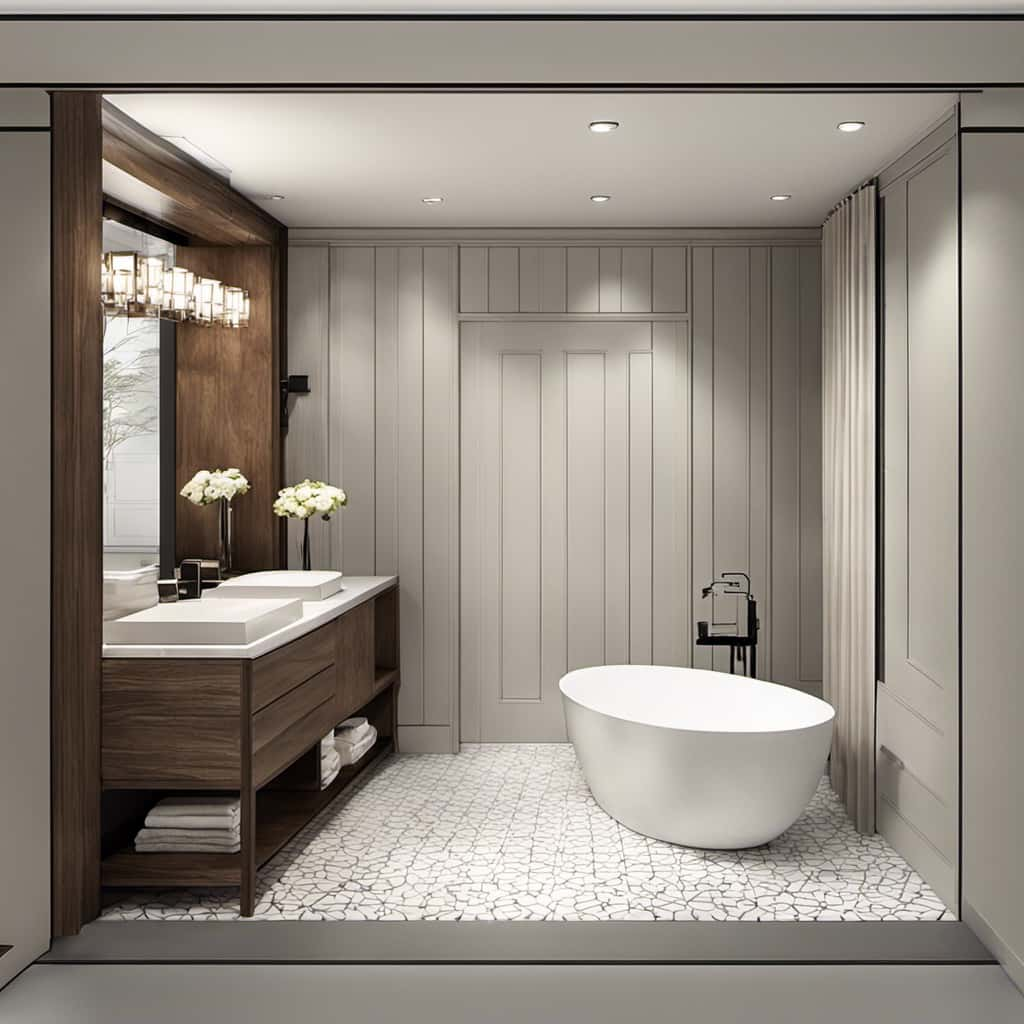
Have you ever wondered if it’s okay to flush toilet paper in Italy? Here’s the lowdown: plumbing practices in Italy may vary from what you’re used to.
We’ve all experienced those moments of uncertainty in unfamiliar bathrooms, right? But fear not, because we’re here to shed some light on this cultural quirk.
In this article, we’ll explore the ins and outs of toilet paper disposal in Italy and offer some handy tips for navigating public restrooms like a pro.
So, let’s dive in!
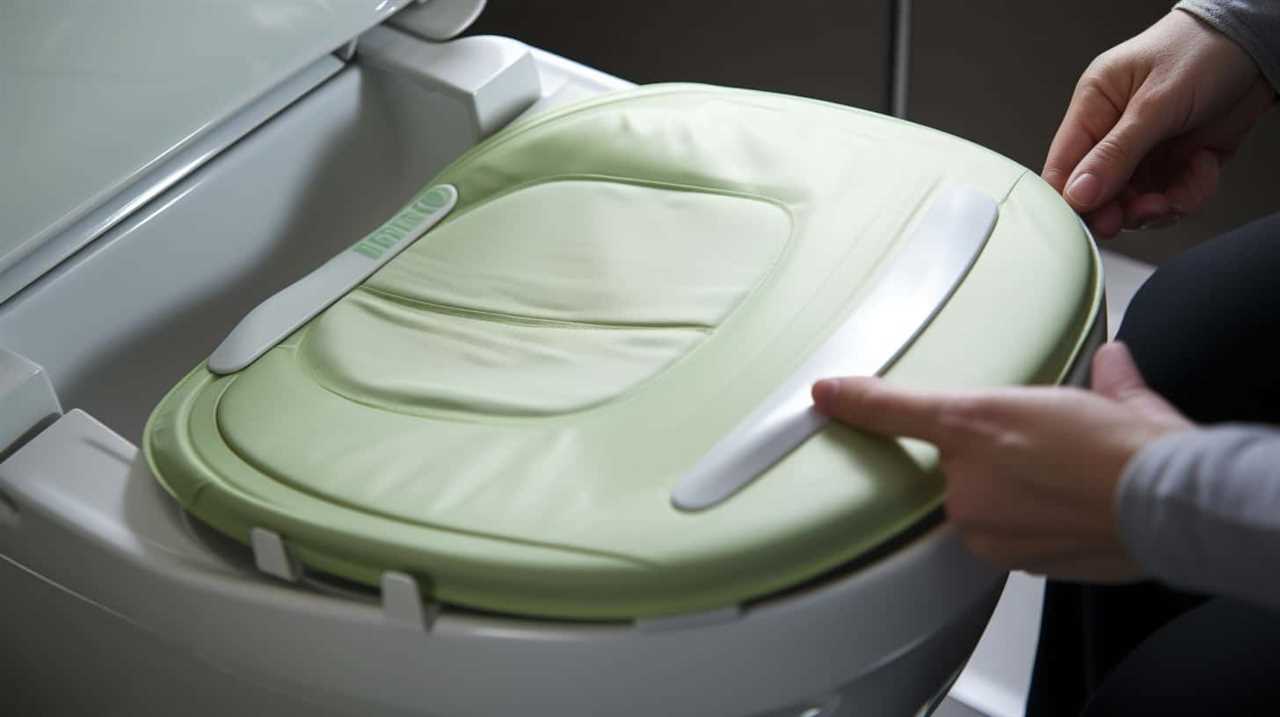
Key Takeaways
- Italian plumbing systems are designed to handle the disposal of toilet paper without any issues.
- In many parts of Italy, the plumbing systems aren’t designed to handle toilet paper, so it is not flushed.
- Italians often dispose of used toilet paper in a waste bin next to the toilet instead of flushing it.
- Proper toilet paper disposal in Italy contributes to the preservation of the country’s historic buildings and protects the delicate plumbing infrastructure.
Plumbing System in Italy
In Italy, the plumbing system allows us to flush toilet paper down the toilet. This convenience isn’t only practical but also has important maintenance and environmental implications.
When it comes to maintenance, Italian plumbing systems are designed to handle the disposal of toilet paper without any issues. The pipes and sewer systems are built to efficiently transport and process waste, including toilet paper, preventing clogs and blockages. This is a testament to the advanced engineering and infrastructure in the country.
From an environmental perspective, allowing the flushing of toilet paper reduces the need for alternative disposal methods such as trash bins or separate waste systems. It also minimizes the risk of contamination and the spread of bacteria.
However, cultural differences in toilet paper disposal exist, which we’ll explore in the next section.

ARTICLE TRANSITION:
Now that we’ve discussed the plumbing system in Italy, let’s delve into the cultural differences in toilet paper disposal.
Cultural Differences in Toilet Paper Disposal
Let’s explore the cultural differences that exist when it comes to disposing of toilet paper in Italy. Toilet paper etiquette in Italy is quite different from what most of us are accustomed to.
- Do Not Flush: In many parts of Italy, the plumbing systems aren’t designed to handle toilet paper. Instead of flushing it down the toilet, Italians often dispose of used toilet paper in a waste bin next to the toilet.
- Bin Placement: It’s important to note that these waste bins are usually lined with plastic bags, which are replaced regularly to maintain cleanliness.
- Odor Control: To minimize any unpleasant smells, it’s common for Italians to use scented garbage bags and air fresheners in the bathroom.
Understanding these cultural differences in toilet paper disposal is crucial to avoid any plumbing mishaps during your visit to Italy.
Now, let’s explore some alternative methods of toilet paper disposal.

Alternative Methods of Toilet Paper Disposal
We can explore some alternative methods of toilet paper disposal in Italy. While flushing toilet paper is not the norm, there are sustainable options available. One popular method is using a bidet, which is a separate water basin used for cleaning oneself after using the toilet. Bidets are commonly found in Italian bathrooms and offer a hygienic and eco-friendly alternative to toilet paper. Another option is to use toilet paper specifically designed for disposal in waste bins, rather than flushing it. These specially-made toilet paper products are biodegradable and can be safely discarded in the bins provided. By utilizing these alternative methods, Italians are able to reduce their environmental impact while maintaining cleanliness. Speaking of cleanliness, let’s now move on to some tips for using public restrooms in Italy.
| Sustainable Options | Bidet Usage |
|---|---|
| Hygienic | Water-based |
| Eco-friendly | Reduces waste |
| Common in Italy | Alternative to toilet paper |
| Biodegradable | Clean and refreshing |
| Reduces environmental impact | Promotes personal hygiene |
Now that we’ve explored alternative methods of toilet paper disposal, let’s dive into some tips for using public restrooms in Italy.
Tips for Using Public Restrooms in Italy
Moving on to using public restrooms in Italy, there are a few tips that can help ensure a pleasant experience.
- Practice good hand hygiene: Always carry hand sanitizer or antibacterial wipes, as not all restrooms may have soap or paper towels available.
- Follow proper toilet etiquette: Italians are serious about keeping restrooms clean. It’s important to remember to not throw toilet paper into the toilet bowl, but instead, dispose of it in the waste bin provided.
- Be prepared for paid restrooms: Many public restrooms in Italy require a small fee for usage. It’s helpful to always carry some loose change to avoid any awkward situations.
Conclusion: Proper Toilet Paper Disposal in Italy
Continuing the conversation from the previous subtopic, we can delve into the proper disposal of toilet paper in Italy. When it comes to cultural implications, it is important to note that Italy has a different approach to toilet paper disposal compared to other countries. In most regions, it is customary to throw used toilet paper into a bin next to the toilet instead of flushing it down the toilet. This practice is rooted in the country’s older plumbing systems, which are not designed to handle large amounts of toilet paper.

This method of disposal may seem unusual to visitors, but it is essential to respect and abide by local customs. It is also worth considering the environmental impact of flushing toilet paper. By disposing of it in a bin, Italy reduces the strain on its sewage system and prevents potential blockages and costly repairs. Additionally, this practice contributes to the preservation of the country’s historic buildings, as it helps protect the delicate plumbing infrastructure.
To help you understand the proper toilet paper disposal in Italy, here is a simple table outlining the key differences compared to other countries:
| Country | Toilet Paper Disposal Method |
|---|---|
| Italy | Throw in a bin |
| United States | Flush down the toilet |
| United Kingdom | Flush down the toilet |
Frequently Asked Questions
Is the Plumbing System in Italy Similar to the Plumbing System in Other Countries?
Cultural differences affect plumbing systems worldwide. When comparing the plumbing system in Italy to others, it’s essential to consider factors like toilet paper disposal. Understanding these variations helps us navigate plumbing practices while traveling.
What Are Some Cultural Differences in Toilet Paper Disposal in Italy Compared to Other Countries?
Cultural practices vary when it comes to toilet paper disposal in Italy compared to other countries. It’s important to note that some places don’t allow flushing due to the plumbing system and environmental impact.

Are There Any Alternative Methods of Toilet Paper Disposal Commonly Used in Italy?
There are alternative methods of toilet paper disposal commonly used in Italy. Some eco-friendly options include bidets, which provide a more thorough clean, and wet wipes, which can be tossed in a special bin.
Do Public Restrooms in Italy Have Any Specific Rules or Norms That Visitors Should Be Aware Of?
When using public restrooms in Italy, it’s important to be mindful of toilet paper etiquette and maintain cleanliness. Familiarizing yourself with the specific rules and norms will ensure a smooth experience.
Why Is Proper Toilet Paper Disposal Important in Italy?
Proper toilet paper disposal is important in Italy due to the environmental impact of improper disposal. It helps maintain hygiene and prevents clogging of the sewage system. It’s crucial to follow local guidelines and dispose of toilet paper in the appropriate bins provided.
Conclusion
In conclusion, when it comes to toilet paper disposal in Italy, remember to always follow their cultural norms and plumbing system. As the saying goes, ‘When in Rome, do as the Romans do.’

Be mindful of the alternative methods available and always use public restrooms responsibly. By respecting their customs, we can ensure a smooth and pleasant experience while visiting Italy.
So next time you’re in the beautiful country, remember to be considerate and flush the toilet paper in the designated manner.
With an impeccable eye for detail and a passion for bathroom-related, Ava leads our editorial team gracefully and precisely.
Under her guidance, Best Modern Toilet has flourished as the go-to resource for modern bathroom enthusiasts. In her free time, you might find Ava exploring antique shops and looking for vintage bathroom fixtures to add to her collection.
FAQ - Advanced Bathroom Queries
Can Wipes Go in the Toilet

Were you aware that flushing wipes down the toilet is the cause of over 90% of clogged pipes in the United States?
We, as a collective, need to understand the impact this seemingly harmless action has on our plumbing systems and the environment.
In this article, we will delve into the consequences of flushing wipes, explore alternative methods, and provide you with the proper disposal techniques.
Let’s educate ourselves and make informed decisions about the safety of flushing wipes.
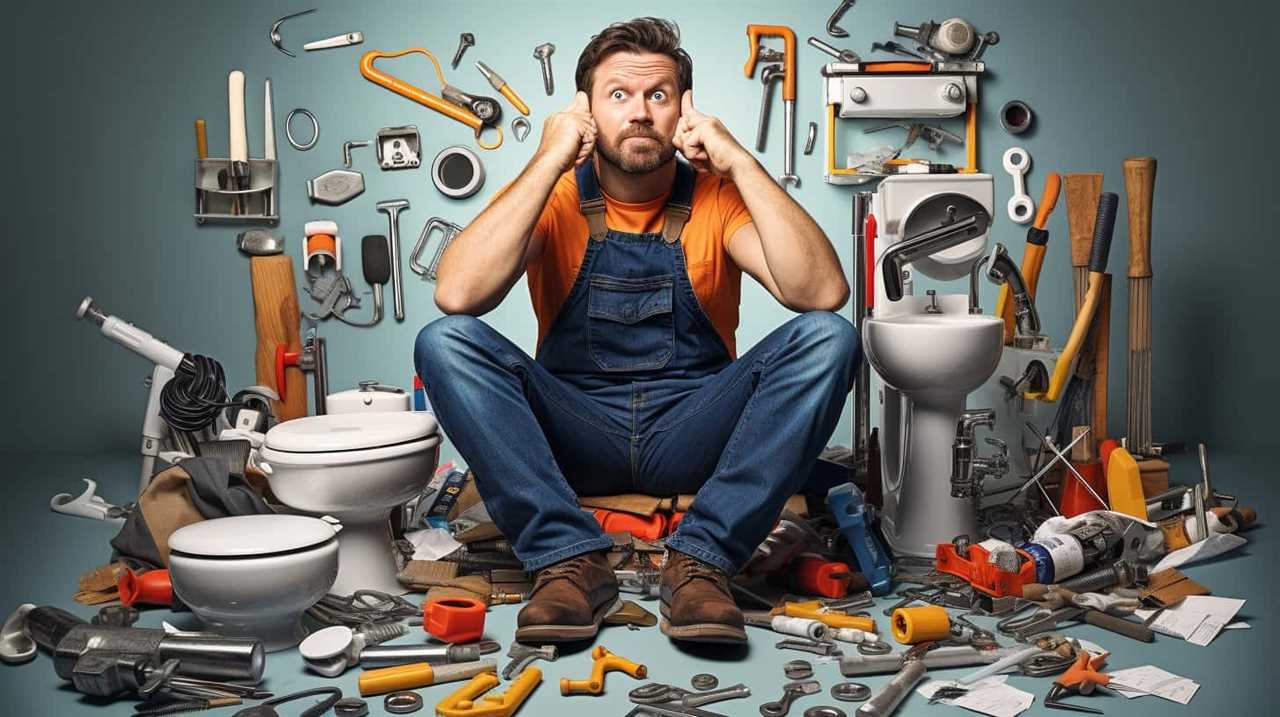
Key Takeaways
- Flushing wipes can cause clogged pipes, leading to expensive plumbing repairs.
- Flushing wipes contributes to marine pollution and harm to marine life and ecosystems.
- Biodegradable and reusable wipes are eco-friendly alternatives to flushing wipes.
- Proper disposal of wipes in the trash can help prevent blockages in the sewage system and protect the environment.
The Impact on Plumbing Systems
In our experience, flushing wipes down the toilet can have a detrimental impact on plumbing systems. When wipes are flushed, they can accumulate and create blockages in the pipes. This can lead to plumbing repairs that are time-consuming and costly.
The fibers in wipes don’t break down as easily as toilet paper, causing them to clump together and form clogs. These clogs can restrict the flow of water, leading to backups and potential flooding. Additionally, the presence of wipes in the pipes can create a breeding ground for bacteria, further exacerbating the problem.
It’s important to understand that the convenience of flushing wipes comes at the expense of potential plumbing issues. Transitioning to the subsequent section, the environmental consequences of flushing wipes will also be explored.
Environmental Consequences of Flushing Wipes
Continuing our exploration of the impact of flushing wipes on plumbing systems, we now turn our attention to the environmental consequences of this practice. Flushing wipes can have severe implications for our marine ecosystems and sewage treatment facilities.

Here are four key reasons why flushing wipes can be detrimental to the environment:
- Marine pollution: Wipes that are flushed down the toilet often end up in our oceans and waterways, contributing to marine pollution. These wipes can harm marine life, such as turtles and seabirds, when they mistake them for food or become entangled in them.
- Clogging sewage treatment facilities: Wipes don’t break down like toilet paper. Instead, they accumulate in sewage systems, leading to blockages and costly repairs for sewage treatment facilities. This can also result in untreated sewage overflow into our rivers and oceans.
- Increased energy and chemical usage: Dealing with wipes in sewage treatment plants requires additional energy and chemical usage, as these facilities need to work harder to break down and remove them. This increased resource consumption can have a negative impact on the environment.
- Microplastic pollution: Wipes often contain synthetic fibers that don’t biodegrade. When they enter water bodies, they break down into microplastics, which are harmful to aquatic life. These microplastics can be ingested by marine organisms, potentially entering the food chain and causing further harm.
It is crucial to avoid flushing wipes down the toilet to protect our marine ecosystems and sewage treatment facilities. Proper disposal in the trash can help mitigate these environmental consequences.
Alternatives to Flushing Wipes
Now, let’s delve into some alternatives to flushing wipes.
When it comes to biodegradable options, there are wipes available on the market that are made from materials that can break down naturally over time. These wipes are designed to be safe for the environment and can be disposed of in a compost bin or in the trash.

Another alternative is to create your own DIY reusable wipes. By using soft, washable materials such as cotton or bamboo fabric, you can make your own wipes that can be used multiple times before being washed. This not only reduces waste but also saves money in the long run.
Remember to wash these wipes thoroughly after each use to maintain hygiene.
Proper Disposal Methods for Wipes
To properly dispose of wipes, we should consider alternative methods that are safe for the environment and easy to implement. Here are four options to consider:
- Trash Bin: The simplest and most common method is to dispose of wipes in a trash bin. This ensures that they don’t end up in the sewage system and cause blockages.
- Composting: If you’re using biodegradable wipes, you can compost them along with other organic waste. Make sure to check the packaging for information on their biodegradability.
- Specialized Disposal Programs: Some municipalities offer specialized programs for disposing of wipes. These programs collect and dispose of wipes in an environmentally friendly manner.
- Flushable Wipes: If you choose to use flushable wipes, make sure they’re labeled as such and follow the manufacturer’s instructions. However, keep in mind that even flushable wipes can cause issues in the sewage system.
Considering the importance of hygiene practices during COVID-19, it’s crucial to dispose of wipes properly to protect the environment and prevent clogs in the sewage system.

However, is it really safe to flush wipes? Let’s find out in the next section.
Conclusion: Is It Safe to Flush Wipes?
After considering the various disposal methods for wipes, it’s important to assess the safety of flushing them down the toilet. Although convenient, flushing wipes carries certain risks that shouldn’t be overlooked.
One of the main concerns is the potential damage to septic tanks. Unlike toilet paper, wipes don’t break down easily. Instead, they can accumulate in the septic tank and clog the system. This can lead to costly repairs and even complete system failure.
Additionally, wipes may also contribute to sewer backups and overflow in municipal sewer systems, causing environmental contamination and health hazards.
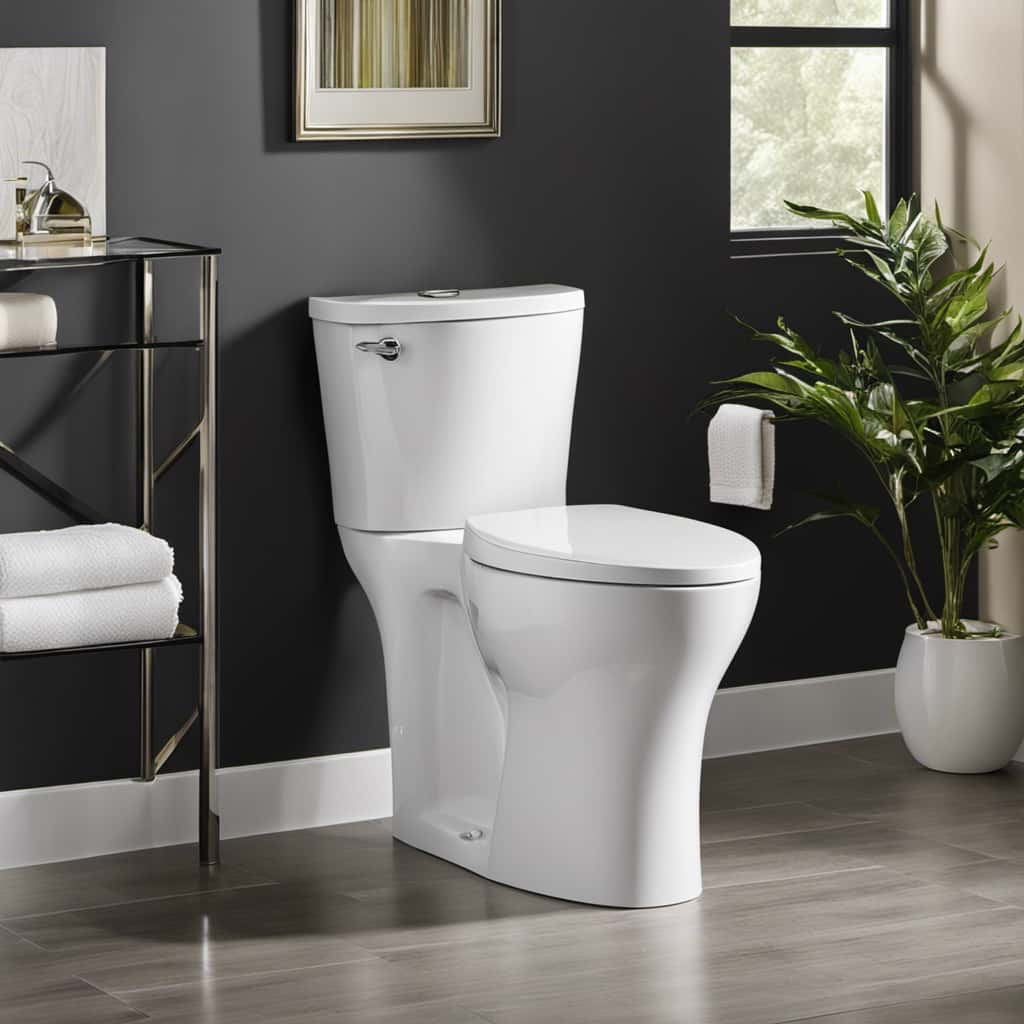
Therefore, it’s generally recommended to avoid flushing wipes and instead dispose of them in the trash to minimize the risks involved and prevent potential septic tank implications.
Frequently Asked Questions
How Do Wipes Affect the Quality of Water in Rivers and Oceans?
The impact of wipes on marine life is significant. Proper disposal methods are crucial to protect the quality of water in rivers and oceans. We must understand the consequences of not disposing of wipes correctly to ensure the health of our ecosystems.
Are All Types of Wipes Equally Harmful to the Environment When Flushed?
Different types of wipes have varying environmental impacts when flushed. Biodegradable wipes are more effective in reducing harm. Flushing wipes, regardless of type, can contribute to clogged pipes and sewage system issues.
Can Flushing Wipes Lead to Blockages in Household Plumbing Systems?
Flushing wipes can wreak havoc on our plumbing. We learned the hard way when our toilet backed up, causing a messy flood. Not only do wipes clog sewage systems, but they also pose potential health hazards.
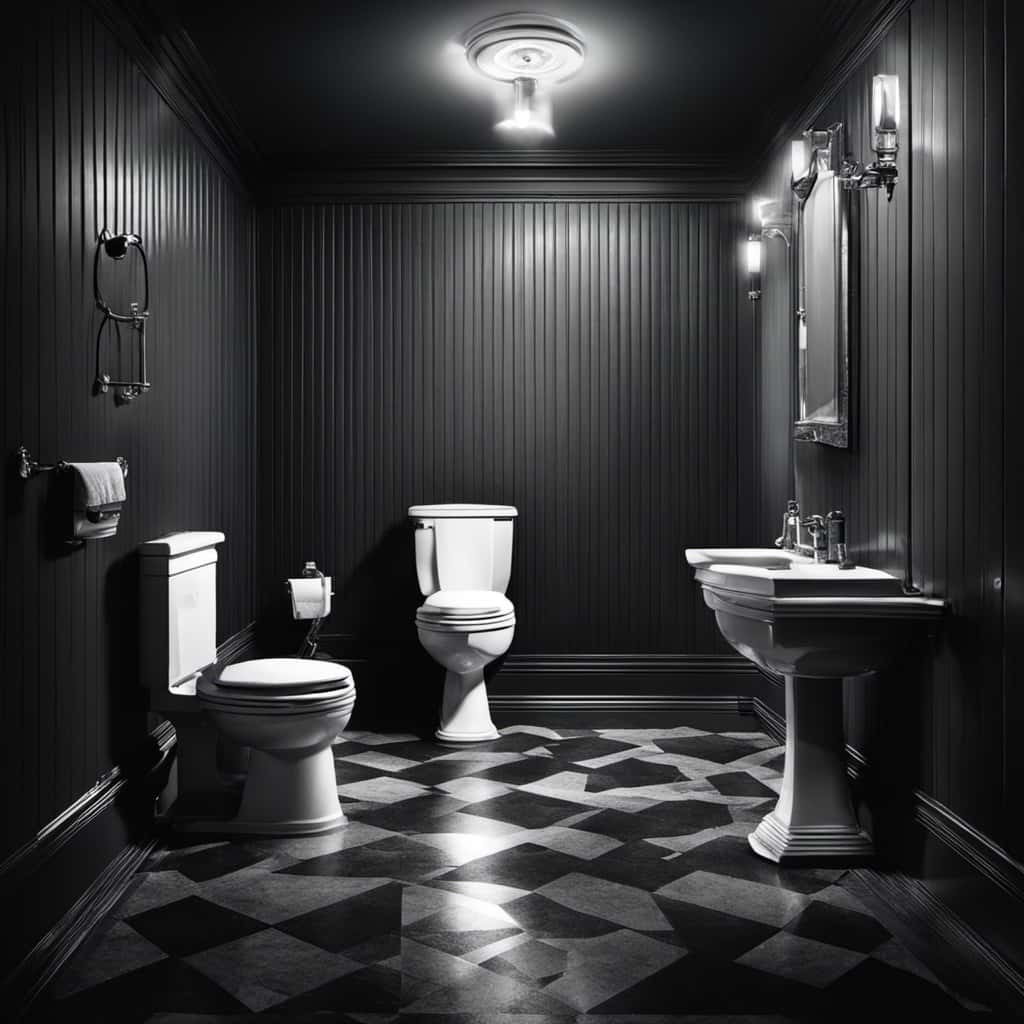
What Are Some Environmentally-Friendly Alternatives to Flushing Wipes?
Eco-friendly options and biodegradable alternatives are available as substitutes for flushing wipes. These alternatives are environmentally conscious and can help prevent blockages in household plumbing systems while still providing the desired functionality.
Are There Any Specific Guidelines for Disposing of Wipes in Landfills?
Guidelines for disposing of wipes in landfills are essential. We must follow proper procedures to avoid environmental harm. Disposing of wipes incorrectly can lead to clogged pipes, sewage backups, and negative impacts on our water systems.
Conclusion
In conclusion, it’s crucial to remember that wipes should never be flushed down the toilet. Despite their convenience, flushing wipes can lead to severe plumbing issues and have detrimental environmental consequences.
It’s essential to explore alternative disposal methods, such as throwing them in the trash or using biodegradable options.

Let’s be mindful of our actions and protect our plumbing systems and the environment for future generations.
With an impeccable eye for detail and a passion for bathroom-related, Ava leads our editorial team gracefully and precisely.
Under her guidance, Best Modern Toilet has flourished as the go-to resource for modern bathroom enthusiasts. In her free time, you might find Ava exploring antique shops and looking for vintage bathroom fixtures to add to her collection.
FAQ - Advanced Bathroom Queries
What Liquids Can Be Flushed Down the Toilet

Here’s what we’re aware of: not all liquids are safe to be flushed down the toilet. But don’t worry, we have the information on what can be safely flushed.
In this article, we’ll break it down for you, using our technical know-how and expertise. From water and urine to toilet paper and liquid waste from cleaning and personal care products, we’ll guide you through the dos and don’ts of flushing liquids.
Get ready to master the art of proper toilet liquid disposal!
Key Takeaways
- Water, urine, and toilet paper are the only liquids that can be safely flushed down the toilet.
- Flushing harmful liquids down the toilet can lead to water pollution, contamination of water sources, harm to aquatic life, and sewer system blockages.
- Liquids such as cooking oil and grease, medications and drugs, paint and solvents, and cleaning chemicals should never be flushed down the toilet.
- Proper disposal methods for liquids include utilizing recycling centers, contacting waste management authorities for guidance, participating in community collection events, and using sealed containers or absorbent materials before disposal.
Water
We can flush large quantities of water down the toilet without causing any harm to the plumbing system. Toilet water, which is essentially clean water, poses no threat to the pipes or the overall hygiene of the toilet. This is because the plumbing system is designed to handle the volume and flow of water during the flushing process.

Water is an essential element in maintaining toilet hygiene, as it helps in effectively rinsing away waste and preventing any unpleasant odors. Additionally, the force of the water during flushing aids in keeping the toilet bowl clean and free from any residue.
Therefore, when it comes to toilet hygiene, water is a safe and necessary liquid that can be flushed down the toilet without any concerns.
Urine
To maintain proper toilet hygiene, we can safely flush urine down the toilet. Urine is a waste product produced by the kidneys, consisting mainly of water and dissolved metabolic waste. It’s generally sterile and poses no significant risk to the environment or public health when flushed down the toilet. In fact, flushing urine helps to prevent odors and maintain a clean and hygienic toilet environment.
However, it’s important to note that if someone has a urinary tract infection (UTI), it’s advisable to seek medical attention and follow the prescribed treatment. UTIs can be caused by bacteria and flushing urine infected with bacteria may contribute to the spread of infection.
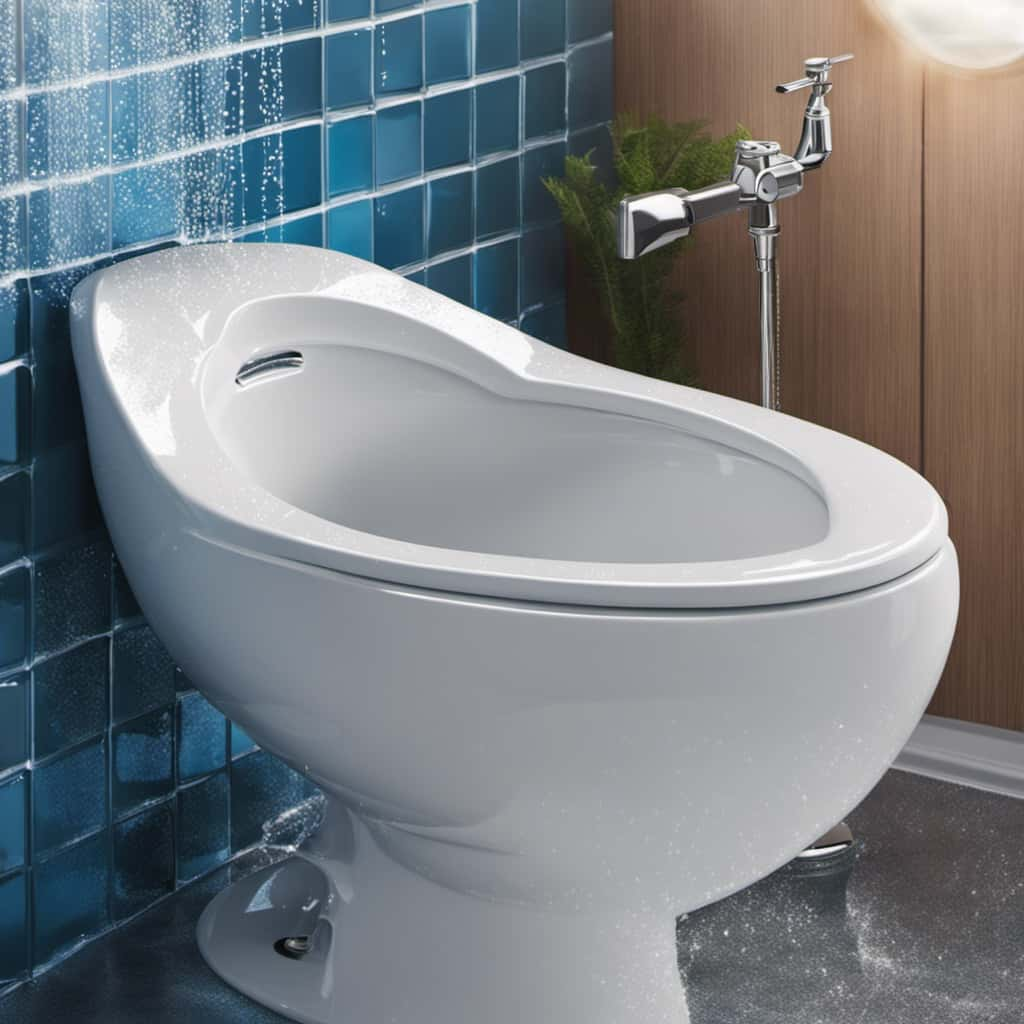
Now, let’s move on to the next essential topic of discussion: toilet paper.
Toilet Paper
Moving on from the previous subtopic of urine, let’s now discuss toilet paper and its role in maintaining proper toilet hygiene. Toilet paper is an essential item in every bathroom, and choosing the right brand is crucial. Here are four important factors to consider when selecting toilet paper:
- Softness: Look for brands that offer a soft and gentle texture to avoid any discomfort during use.
- Strength: Opt for toilet paper that’s strong and durable to prevent tearing or breakage.
- Absorbency: Consider brands that offer excellent absorbency for efficient cleaning and reduced usage.
- Eco-Friendliness: Explore toilet paper alternatives made from recycled materials or bamboo, which are more sustainable options.
Liquid Waste From Cleaning Products
After considering the factors for selecting the right toilet paper, let’s now turn our attention to the proper disposal of liquid waste from cleaning products. When it comes to liquid waste from cleaning products, it is important to be mindful of the impact on the environment. Many conventional cleaning products contain harmful chemicals that can pollute water systems and harm aquatic life. To minimize the negative effects, it is essential to explore eco-friendly alternatives and adopt proper disposal methods. Here is a table highlighting some eco-friendly alternatives and proper disposal methods for liquid waste from cleaning products:
| Eco-friendly Alternatives | Proper Disposal Methods |
|---|---|
| Use natural cleaning products made from plant-based ingredients | Dispose of liquid waste at designated collection points |
| Make your own cleaning solutions using vinegar, baking soda, and lemon juice | Avoid pouring cleaning product waste down the drain |
| Look for cleaning products with eco-label certifications | Follow local regulations for hazardous waste disposal |
| Use microfiber cloths and reusable mop pads instead of disposable wipes | Recycle empty cleaning product containers |
Liquid Waste From Personal Care Products
When it comes to liquid waste from personal care products, we must consider the proper disposal methods to minimize environmental impact. Here are four important points to keep in mind:
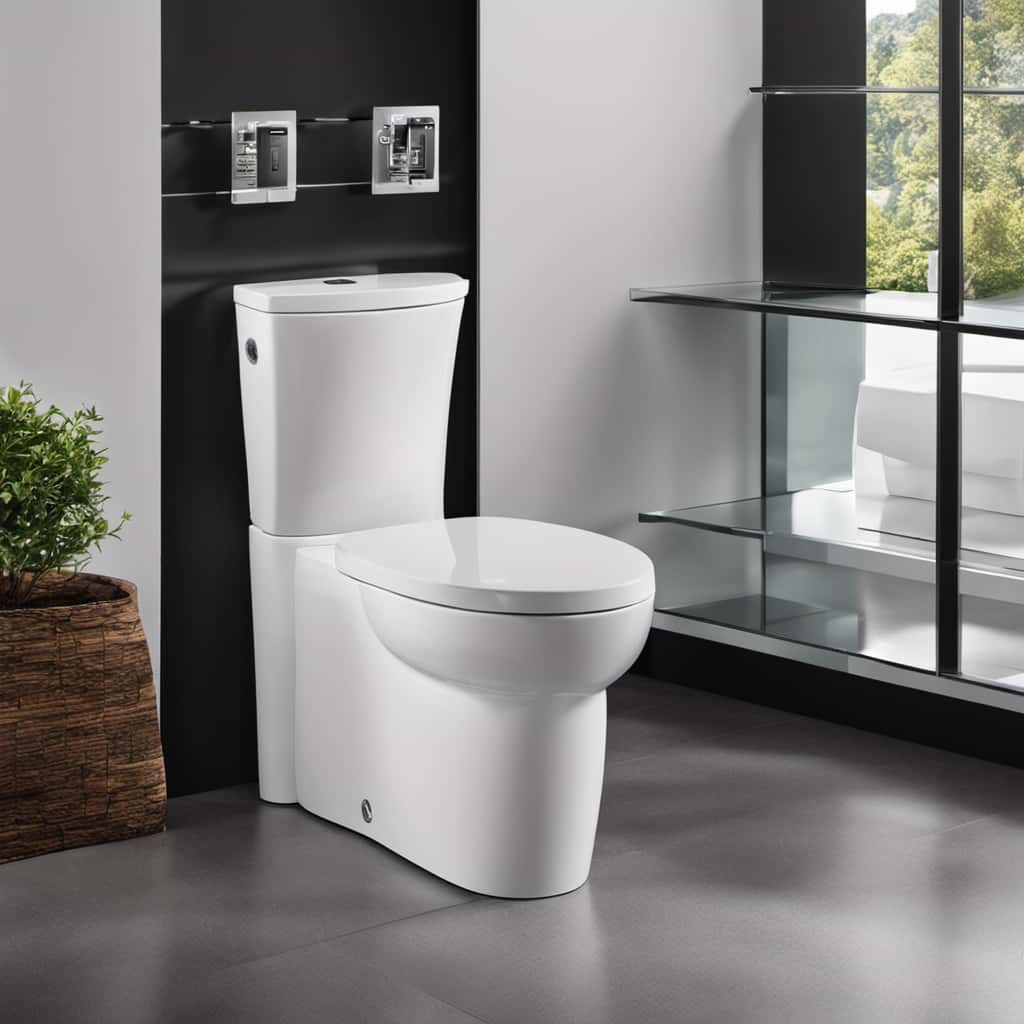
- Hazardous chemicals: Many personal care products contain hazardous chemicals such as parabens, phthalates, and triclosan. These substances can be harmful to aquatic life and may disrupt ecosystems if they enter water bodies.
- Environmental impact: Improper disposal of personal care product waste can result in contamination of water sources, affecting both human health and wildlife. It’s crucial to dispose of these liquids responsibly to minimize their impact on the environment.
- Proper disposal methods: Check local regulations for guidance on disposing of personal care product waste. In many cases, it’s best to minimize waste by using products sparingly and opting for environmentally friendly alternatives. When disposing of liquid waste, consider recycling options or take it to a designated hazardous waste collection facility.
- Consumer responsibility: As consumers, we’ve a role to play in minimizing the environmental impact of personal care products. Choosing products with eco-friendly formulations and packaging, as well as properly disposing of any liquid waste, can help protect the environment for future generations.
Frequently Asked Questions
Can I Flush Coffee Down the Toilet?
We can’t flush coffee down the toilet. It’s best to dispose of coffee grounds in alternative methods, like composting or throwing them in the trash. Flushing coffee can clog pipes and cause damage.
Is It Safe to Flush Expired Medication Down the Toilet?
Flushing expired medication down the toilet is not safe. It can have detrimental environmental impacts. Remember, "An ounce of prevention is worth a pound of cure." Properly dispose of medication through take-back programs or at designated collection sites.
Can I Dispose of Bleach by Flushing It Down the Toilet?
Flushing bleach down the toilet is not a safe way to dispose of it. The environmental impact of flushing bleach includes potential contamination of water sources and harm to aquatic life.
Is It Okay to Flush Cooking Oil or Grease Down the Toilet?
Flushing cooking oil or grease down the toilet is a big no-no. It can clog the pipes and cause serious plumbing issues. Proper grease disposal involves cooling, solidifying, and disposing of it in the trash.

Can I Flush Pet Waste, Such as Cat Litter, Down the Toilet?
When considering toilet safety precautions, it’s important to note that flushing cat litter down the toilet is not recommended. Cat litter can cause clogs and damage to plumbing systems. Dispose of it properly in the trash instead.
Conclusion
In conclusion, it’s important to only flush water, urine, toilet paper, and liquid waste from cleaning and personal care products down the toilet. Flushing other liquids can cause clogs and damage to the plumbing system.
Did you know that approximately 75% of plumbing issues are caused by improper flushing? Imagine the frustration of dealing with a clogged toilet and the costly repairs that can follow.
Let’s be mindful of what we flush to avoid unnecessary plumbing problems.
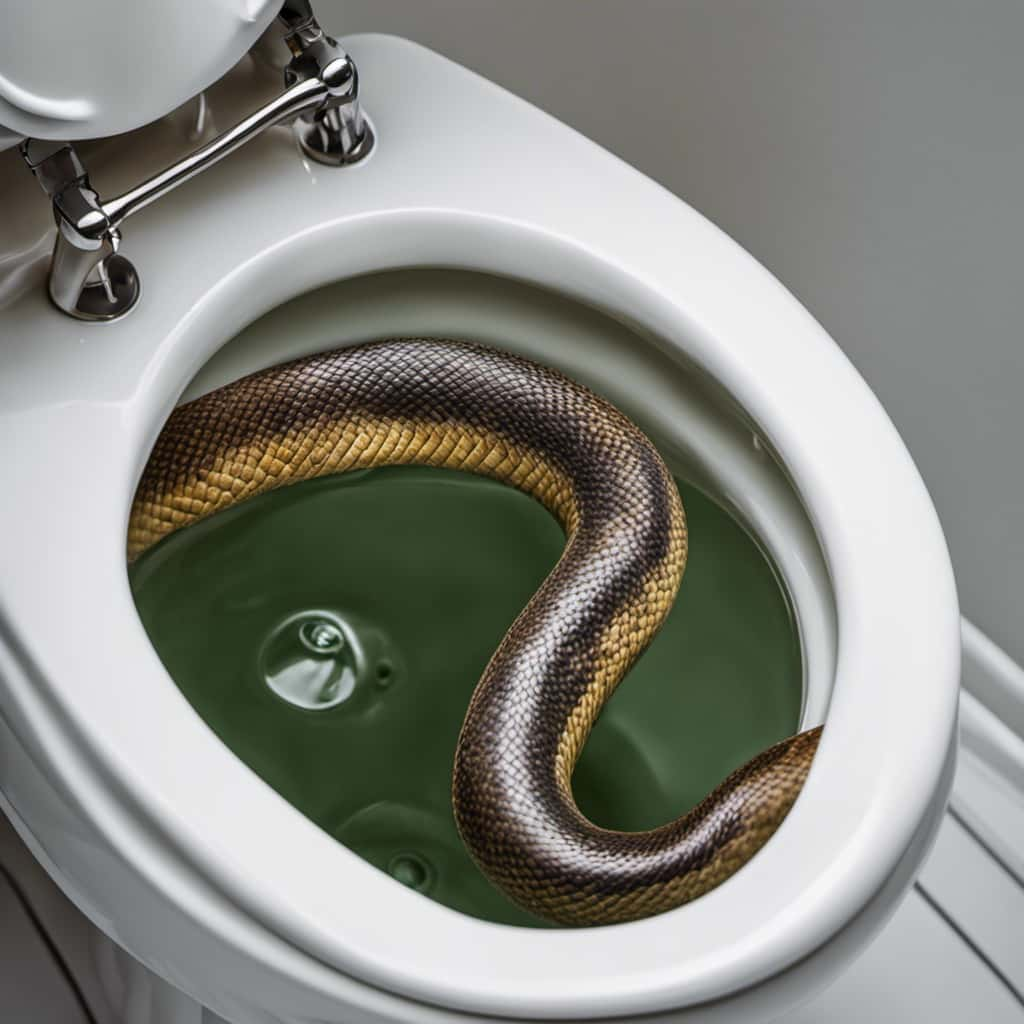
With an impeccable eye for detail and a passion for bathroom-related, Ava leads our editorial team gracefully and precisely.
Under her guidance, Best Modern Toilet has flourished as the go-to resource for modern bathroom enthusiasts. In her free time, you might find Ava exploring antique shops and looking for vintage bathroom fixtures to add to her collection.
-

 Guides2 months ago
Guides2 months agoHow Smart Toilets Can Help Detect Early Signs of Health Issues
-

 Guides3 months ago
Guides3 months agoComparing Top Smart Toilet Brands: Kohler Vs. Toto Vs. American Standard
-

 Guides3 months ago
Guides3 months agoThe Evolution of Toilet Technology: From Ancient Times to Smart Toilets
-

 Guides3 months ago
Guides3 months agoToilet Paper Etiquette Around the World: A Country-by-Country Guide
-

 Guides2 months ago
Guides2 months agoThe Future of Public Restrooms: Smart Toilets in Airports, Malls, and Stadiums
-

 Guides2 months ago
Guides2 months agoSmart Toilets in Japan: What We Can Learn From the Leaders in Toilet Tech
-

 Guides2 months ago
Guides2 months agoSmart Toilet Regulations and Standards: Navigating the Legal Landscape
-

 Guides3 months ago
Guides3 months agoPrivacy Concerns With Smart Toilets: What You Need to Know














